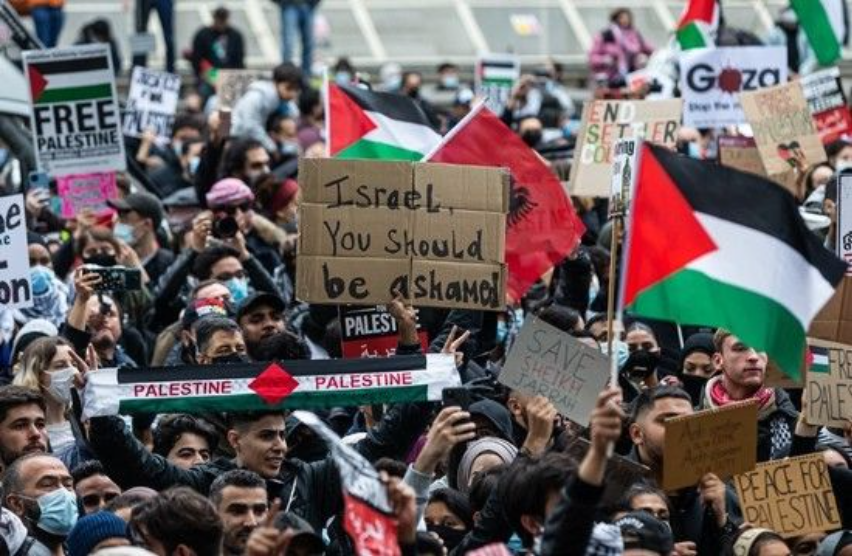Je me suis réveillée le matin sur des conciliabules et des papotages mais aussi sur une flopée de posts diffusés sur toutes les plates-formes qui décortiquent cet évènement saccadé mais épique et parfaitement légitime émis de la part de la bande de « HAMAS » qui déclenche une opération militante inopinée nommée « le déluge de L’AQSA » contre Israël.
Finalement Palestine est entrée en lice ,avec une telle témérité et une telle audace, contre ces crapules vermines et effrontés qui ont empoisonné et détérioré, pendant plus d’un siècle, la terre palestinienne sacrée, qui ont assassiné implacablement ses Hommes, qui ont violé férocement et hargneusement ses femmes, qui ont orpheliné, sans faire quartier, ses enfants, qui ont piétiné les droits, qui ont dévalisé le territoire ,incinéré les corps ,étranglé la joie, désagrégé la société, malmené et pulvérisé les âmes .
Ces créatures diaboliques, sataniques et de nature spectrale ,qui donnent des haut-le-coeurs et qui se sont accaparés, sans vergogne, du territoire palestinien pour le salir et l’user jusqu’à la corde . Ces pestes ,au paroxysme de cruauté et de barbarie ,qui ont momifié les êtres et disséqué les âmes doivent être torturés ,violentés ,persécutés et évacués hors de cette terre bénie ,hors de ce pays de cocagne vers la poubelle des vices , vers l’enfer. Et pour ceux qui considèrent que c’est inhumain de rudoyer les israéliens et notamment ceux qui sont des enfants languides et vulnérables , jetez un œil sur le nombre incommensurable de meurtres des enfants palestiniens chaque jour.
Quant aux pays arabes collatéraux ,qui ont fait preuve d’une félonie revêche et d’une lâcheté burlesque à un certain moment ,on espère qu’ils cessent de pioncer ,qu’ils se réveillent ,qu’ils se ligotent ,s’unissent et s’entraident pour donner un coup de main à leurs confrères et faire montre d’au moins un tantinet de soutien et de souciance vis-à-vis de ce nouveau « maelstrom diluvien » dans lequel plonge notre monde et qu’on souhaite arrivera à secouer les palestiniens pour ne plus être endoloris et les faire émerger de leur situation piteuse ,miteuse et disetteuse .On espère également que la patrie palestinienne à laquelle nous appartenons ,soit exorcisée et émancipée et qu’elle se débarrasse de l’hégémonie irrépressible d’Israël et ses alliés. Le temps est venu d’évacuer ces démons et de récupérer les droits violés . Le temps est venu pour s’évertuer ,se triturer, se dépenser et s’efforcer afin que notre second pays demeure en paix et en pleine sécurité et stabilité.
Je dis ces mots en sanglotant avec une immense effusion de sentiments puisque la cause palestinienne réside aux tréfonds de notre être qui prescrite en voyant Palestine s’émietter. Que Dieu soit à vos côtés nos chers confrères. Que ce combat sempiternel et exténuant s’achève par la gloire et le bonheur dans leur plénitude, Amen
Ecrit par : Wissal Missaoui




Share your thoughts